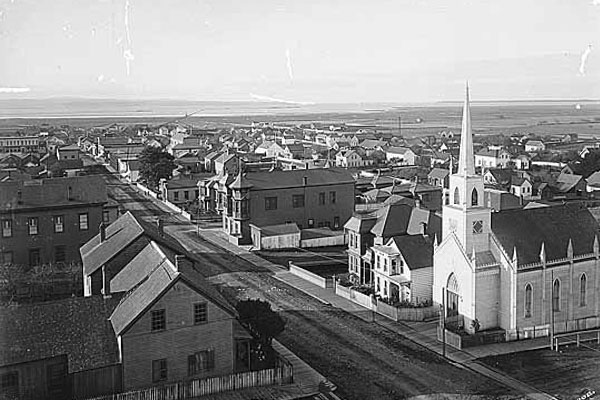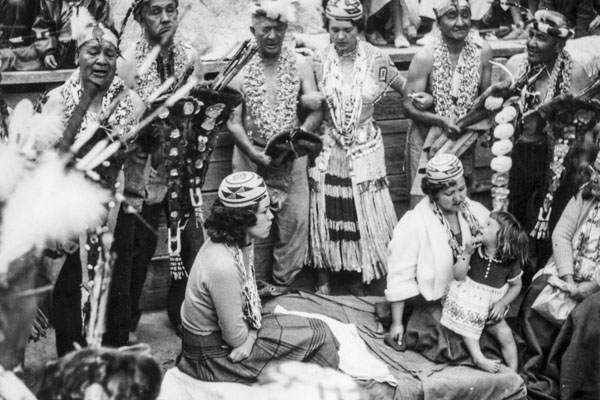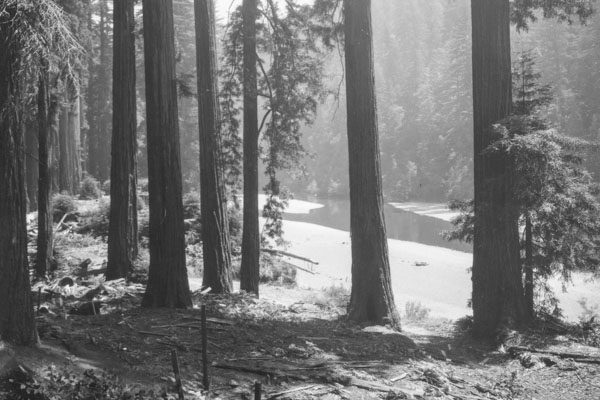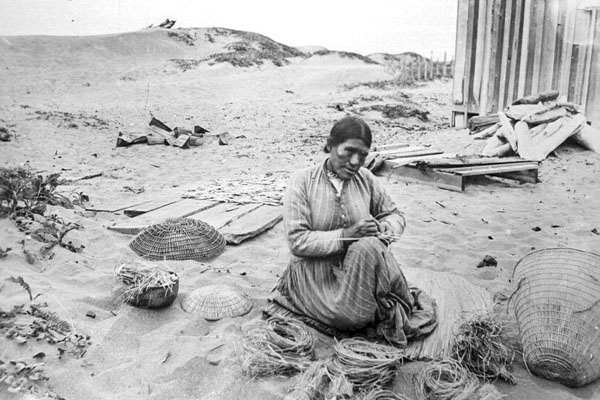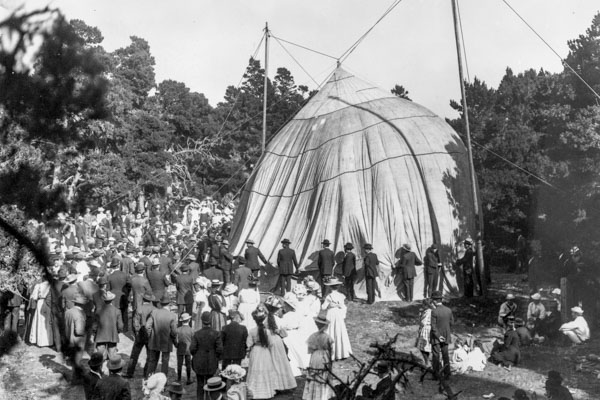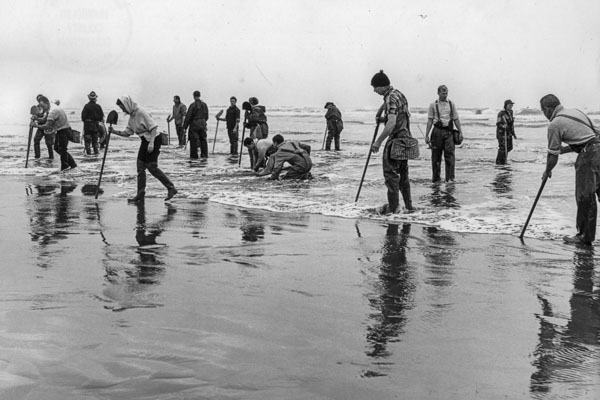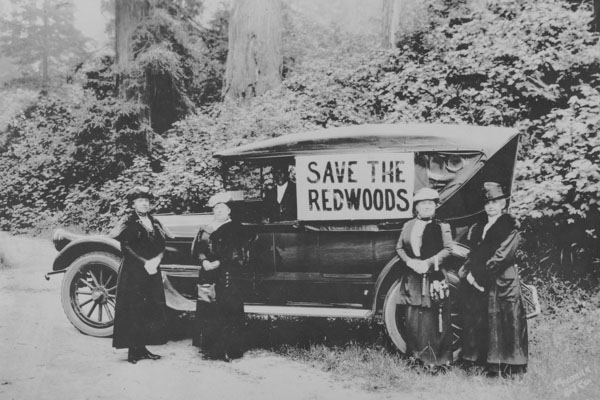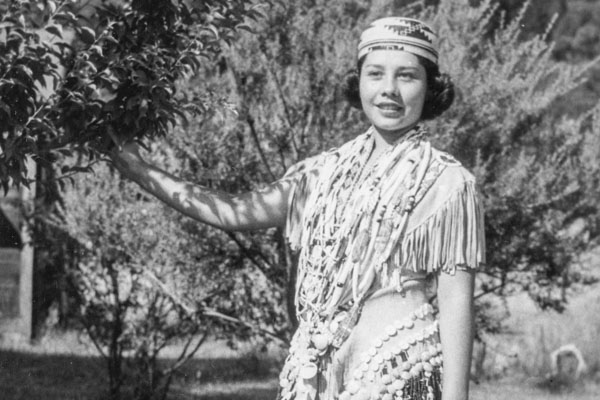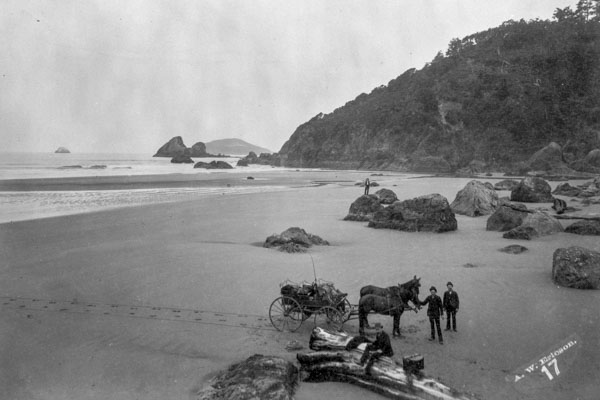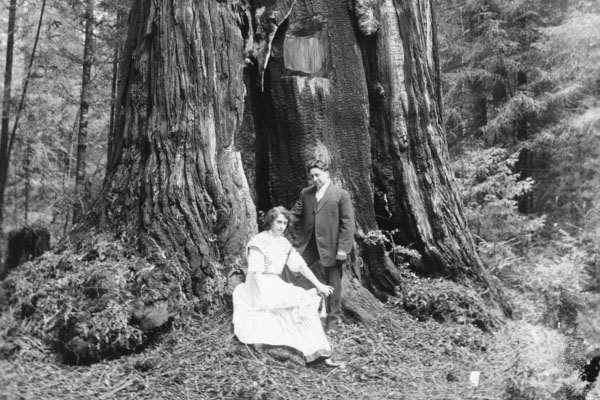You are here
Genzoli Collection - Biography
Andrew Genzoli, 1914-1984
by Links Carranco
The Humboldt Historian
March-April, 1984
pp. 12-13
Andrew "Andy" Genzoli, our editor of The Humboldt Historian, died of cancer on February 15 at the age of 69. As historian for the Eureka Humboldt Times and The Times-Standard, he had been the one person in Humboldt County who had stimulated many people to enjoy and to research local history through his popular column and his many historical articles.
In 1914, Andrew was born in Myrtle Point, Oregon on the Coquille River in a small town called Arago where his father was a dairyman. At the age of three, Andrew's parents moved down to Eureka where the family lived for a short time before moving to Loleta where Mr. Genzoli went to work for Libby, McNeil, and Libby (now Challenge). From Loleta, the family moved to Grizzly Bluff, southeast of Ferndale, where Mr. Genzoli leased the Arthur Church ranch.
At this time Grizzly Bluff was a self-contained community which included Bud Bryant's Grocery Store, Martin's Hall, Kaufman's blacksmith shop, and Arthur Church's grist mill. The town was important for this area, and Mr. Bryant, the local peacemaker, supplied the people with supplies, groceries, and gasoline. Andrew nostalgically remembered the town: "This area was a whole world in itself. Now when I get tired, I go out in the car to Grizzly Bluff and the place brings back pleasant memories."
Andrew started school in 1921 at the Grizzly Bluff School, and his teacher was Dorothy Garrett. From there he attended the Ferndale schools. While in the seventh grade, Dan Fletcher, an old-time printer, offered him a job on the Ferndale Enterprise, where for $1.50 a week he swept the office and washed the type. While working for the newspaper, Andrew's interest in local history began when he discovered the old files of the Enterprise. Ferndale at this time was a self-sufficient town since it was isolated during the winter and spring floods. The independent townspeople had money, and there were two banks in the small community.
While attending Ferndale High School, Andrew covered the Ferndale news for the Humboldt Standard from 1929 to 1933, and he "got the journalistic bug."
It was during high school that Andrew wrote one of the first stories about Seth Kinman, the famous hunter of this area who presented elk-horn chairs to Presidents Buchanan, Lincoln, Johnson, and Hayes. Andrew's first article, "Seth Kinman, California Hunter and Trapper," was published by the California Grizzly Bear in August 1931.
Andrew said, "After I graduated there was a job at The Humboldt Times, but I had to prove myself to Jack Crothers. Twice a week I would come in and work all night and ride home in the morning with Mel Shuster in the newspaper car. And finally with Bill Speegle's help I was hired at $12 a week. One day I got into the files of the Times by accident, and in time I read my way through most of them."
After about four and one-half years with the Times, Andrew wanted to see what was happening in the world, and he went to Santa Cruz to live. He bought a weekly newspaper at Saratoga which he ran "not too prosperously." While in this area he worked for the Salinas Californian, the Watsonville Morning Star, and for the famous newspaperman Reed Hayes, who had worked for William Randolph Hearst. In January 1941 he went to work for Frank Payne who owned the San Jose News.
In July 1943, Andrew joined the U.S. Army and spent three years and four months in the South Pacific from New Caledonia to Manila. In the service he was associated with press work: "My job was to set up a unit in every outfit. I trained men to set up news releases for each man in each outfit, which were sent back home to the local newspapers. I was sent to small islands to cover news where the major correspondents would not go." While in the South Pacific Andrew met many famous journalists who included Julius Adler, former publisher of the New York Times. He was also a contributor to the Stars and Stripes and Yank.
After the war Andrew came back to Ferndale to run the family sporting goods store. Although the store did a good business, he was anxious to get back into newspaper work. One day in Eureka, he met Don O'Kane, publisher of the Times and Standard, and he suggested that Andrew come back to work on the Humboldt Times. Two week later, after selling the store for a profit, Andrew returned to work. In 1948, O'Kane asked him to do some "rural work to give the paper a rural lift and to write a column" which Andrew called "RFD." Later when the newspaper was taken over by the Brush-Moore enterprises, one of the bosses from Canton, Ohio, suggested the title of "Redwood Country" for his column.
In his column Andre wrote about many historical topics of interest through the years, which brought a large response from the public. Interesting topics were stage coach drivers, cookhouses and cooks, ship-building, ships and the men who sailed them, shipwrecks, loggers, early mills, the agricultural story, ethnic groups and many others. Andrew said that he had always tried to avoid scandals "since all families have skeletons in their closets."
Probably the most interesting topic has been Bigfoot, a term which Andrew coined: "Bigfoot was simple and exciting. I got a letter from Mrs. Jesse Bemis about a big-footed character in the Bluff Creek area. I wrote about the news in my column, and I received many phone calls. Editor Scoop Beal sent the news-release off, and over 200 letters poured in from all over the world. Some persons looked for new hope and wanted to come to live in our western wilderness.
People pounded at my door with rifles and dogs, wanting to find Bigfoot. At times my wife Betty and I had to leave town to get some rest. Tom Slick was an exception. He called me from Texas, and I met him at the McKinleyville Airport in his private plane. He put thousands of dollars into an expedition to Bluff Creek, and later he wanted me to work for him."
"My column," Andrew said, "seemed to reach out to people, and people contributed. I got letters entitled "Dear Andy" as if they knew me after reading my column, and it was a nice feeling."
Andrew served for ten years in state historical advisory capacities. He served under Governor Edmund Brown, Sr. for two years on the old California History Month Commission, and Governor Reagan appointed him to two terms on the present Commission on California State Landmarks, which in 1970 established locally two new state historical landmarks: the Arcata and Mad River Railroad at Blue Lake and Tsurai, the Yurok Indian village at Trinidad. In June 1975, the Commission approved two more historical landmarks: the designation of the Humboldt Harbor Historical District site in the Hal Larsen Vista Point at Spruce Point overlooking Humboldt Bay and Bar, and an application for a Ferndale Historical Committee sponsored by the Chamber of Commerce.
Just before Andrew retired from The Times-Standard, members of the Humboldt County Historical Society honored him on May 8, 1979. Speakers included Wallace Martin, Links Carranco, Scoop Beal, Martha Roscoe, and his wife Betty Genzoli. Andrew had a chance for rebuttal and then summarized his life as a newspaperman.
After retirement Andrew continued to teach history at College of the Redwoods, and he also dedicated himself to upgrading the publication of the Humboldt County Historical Society, thereby contributing greatly to the increase in membership now totaling over forty-five hundred.
His tremendous background in local history made the local citizens aware and interested in their Humboldt heritage. We will miss Andrew.
